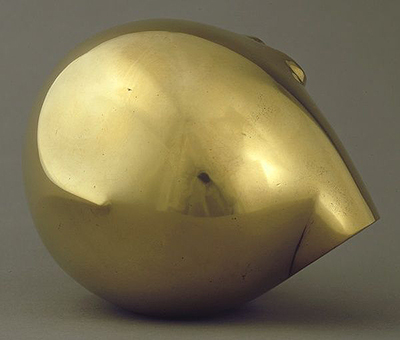Constantin Brancusi was a seminal modern sculptor who was endowed with many artistic skills including creating sculptures from carvings in wood and stone and metal castings while reducing them in form, premising most of his constructions in his ideology, "What is real is not the appearance, but the idea, the essence of things."
Prometheus was one of such sculptures that he creates to exemplify the uniqueness of the sculptural language with an unprecedented re-establishment of his artistic idiom. He had begun a series of ovoid works since 1908, specifically with the L'enfant endormie but later radically simplified his forms, which finally led to the creation of the Prométhée. The context of the art piece is the head of a child who is seemingly sleeping but it is dissociated from the body. He intricately worked on the child’s head to bring out all the detailing on the head including the facial features and the hair. Even though some features of the child’s head are abstracted, you can still perceive the delineation of the mouth, noses, and eyes.
Brancusi utilised subtle arcs on the sleeping child’s head to describe the nose and the eyes. The inclination of the head is a depiction of grief with the elimination of the rest of the body by contortion. The head almost amounts to a perfect sphere. For that reason, the piece was a figural object, a style that is reminiscent of other historical paintings of Prometheus. The artist did not lay focus on the narrative of the subject in the Goethe poem but concentrated on the essential moment. However, he picked on the tilt of the head as a signifier of the poem. He was able to delicately extract his inspiration from the mythological subject but making use of minimal gestures. This was only a depiction of how he saw the future of Modernist sculpture.
Constantin Brancusi became a renowned artist because along with his artistic career he was able to learn and draw inspirations from his colleagues in the industry. They played a crucial role in shaping the path Brancusi took in his career. His friends too played a major role in influencing how Brancusi played with the surface. Some of the noteworthy artists that influenced him were the like of Marcel Duchamp, Fernand Leger, Paul Gauguin and Auguste Rodin with friends like Alfred Stieglitz and Edward Steichen. He also influenced many artists along the way including Donald Judd and Robert Morris and many others till today.




